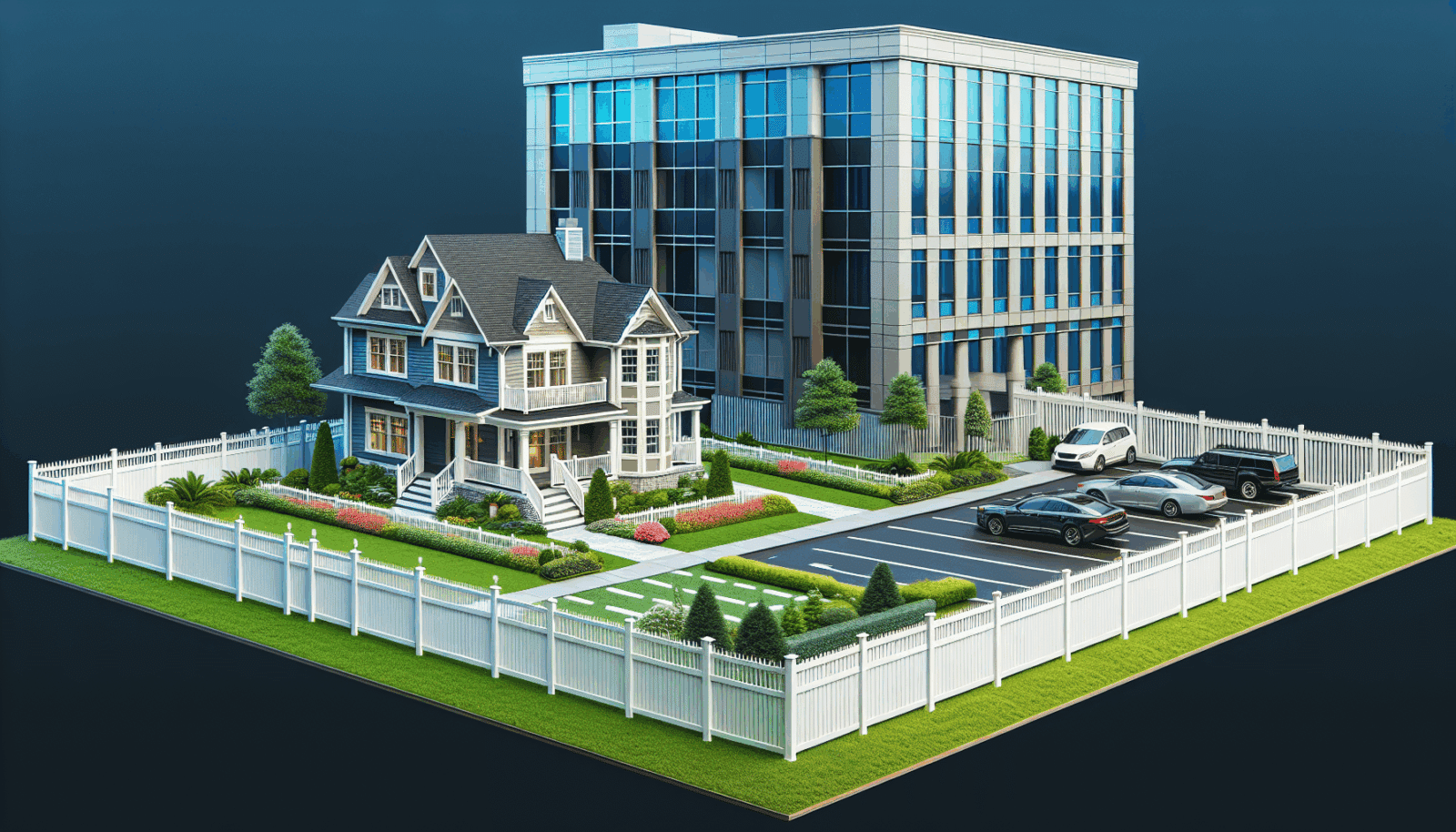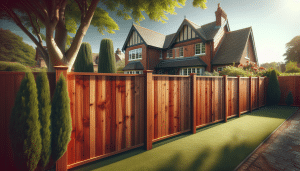At Savannah Gate & Fence, we understand that homeowners are often curious about the cost of installing a Vinyl Fence. It’s a common concern and a significant investment. That’s why we’ve put together this comprehensive guide to help you understand the various factors that affect vinyl fence cost. Our goal is to educate homeowners in Savannah, GA and the surrounding areas, ensuring you make an informed decision that fits your budget and needs.
Contents
- 1 What Influences Vinyl Fence Costs?
- 2 Vinyl Fence Materials: Breaking Down the Costs
- 3 Installation: DIY vs Professional Services
- 4 Maintenance Costs: What to Expect
- 5 Permits and Regulations
- 6 Hidden Costs to Watch Out For
- 7 Comparing Vinyl Fence Costs with Other Materials
- 8 Financing Your Vinyl Fence
- 9 Getting the Most Bang for Your Buck
- 10 Conclusion
What Influences Vinyl Fence Costs?
When it comes to the cost of a vinyl fence, there are several factors at play. The material, length, height, design, and even the installation process can all influence the final price. Understanding these elements can make it easier to budget effectively for your new fence.
First, the material of the fence itself plays a significant role. Vinyl can come in various grades and qualities, which can affect durability and appearance. Naturally, higher-quality materials will come at a higher price.
Secondly, the length and height of your fence will also affect costs. A longer or taller fence will require more materials and labor, naturally driving up the price. Considering these factors will help you prepare for the costs involved.
Vinyl Fence Materials: Breaking Down the Costs
The cost of materials is one of the most significant components of the overall expense. Vinyl fencing comes in different styles and grades, each carrying its own price tag. Here’s what you need to know about vinyl fence materials.
Basic vinyl fencing is usually the most affordable option. It is still durable and aesthetically pleasing but may not have all the features of higher-end materials. This option is perfect for those on a tighter budget.
High-grade vinyl, on the other hand, offers better durability, UV resistance, and sometimes even extra features like intricate designs or textures. While this will cost more upfront, it could save money in the long run due to reduced maintenance and longer lifespan.
Installation: DIY vs Professional Services
When it comes to installing your vinyl fence, you have two main options: Do-It-Yourself (DIY) or hiring a professional. Each route has its own cost implications and benefits.
Installing a fence on your own can save you some money on labor costs. However, it can be a time-consuming and physically demanding task. If you’re a seasoned DIYer, this might be a viable option for you.
Hiring a professional takes the work and stress out of the equation. While there is an added cost, this guarantees a high-quality installation that meets all local regulations and standards. At Savannah Gate & Fence, we offer professional installation services to ensure your fence is installed correctly the first time around.
Maintenance Costs: What to Expect
Many homeowners are concerned not just with the initial cost but also with the long-term maintenance costs associated with a vinyl fence. Here’s what you should expect.
Vinyl fences are famously low-maintenance compared to other materials like wood. They don’t require painting, staining, or sealing. A simple wash with a hose is usually enough to keep it looking fresh.
However, while vinyl is quite durable, it’s not entirely damage-proof. Should any issues like cracks or breaks occur, repairs may be necessary, although they are generally infrequent and straightforward.
Permits and Regulations
Before you proceed with a vinyl fence installation, it’s crucial to consider local permits and regulations. Ignoring these can result in fines and additional costs.
In most areas, you will need a permit to install a fence. The cost of this permit can vary, so it’s worth checking with your local building authority. Be sure to factor this into your budget.
Additionally, there may be regulations concerning the height and style of the fence. Understanding these rules ahead of time can save you from costly mistakes and ensure your fence complies with local laws.
Hidden Costs to Watch Out For
The most frustrating part of any home improvement project can be the unexpected costs that crop up. To help you avoid these surprises, we’ve highlighted some possible hidden costs.
- Soil Conditions: If the soil where you plan to install your fence is rocky or otherwise difficult to dig, you might incur extra costs for excavation or specialized tools.
- Utility Lines: Ensure you check for any underground utility lines before installation. Moving or working around these can add to the overall expense.
- Customizations: Any special customizations or modifications to your vinyl fence design will generally increase costs. This includes things like Gates, decorative elements, or non-standard dimensions.
- Old Fence Removal: If there’s an existing fence that needs to be removed, this will add to your total costs. Be sure to factor in labor and disposal fees.
- Weather and Season: Sometimes, installation during peak seasons or adverse weather conditions can lead to additional costs. Planning ahead can help mitigate some of these expenses.
Comparing Vinyl Fence Costs with Other Materials
You might be wondering how vinyl fences stack up against other popular fencing materials like wood, metal, or composite. Each material has its own pros and cons, and costs can vary widely.
Wood fences are often cheaper initially but can be expensive to maintain due to the need for regular staining or painting. They are prone to rot, warping, and insect damage, which can add to the maintenance costs over time.
Metal fences, such as aluminum or wrought iron, offer durability and a unique aesthetic but come with a higher upfront cost. While they require less maintenance than wood, they can rust and may need occasional touch-ups.
Financing Your Vinyl Fence
We understand that financing a new vinyl fence can be a concern for many homeowners. Fortunately, several options can help you manage the costs more effectively.
One of the simplest options is to use savings or cash to pay for your new fence. This avoids any interest or financing fees but can be a significant upfront investment.
Alternatively, you might consider financing through a personal loan or a home improvement loan. These options often come with manageable monthly payments, making it easier to budget for your new fence. Be sure to shop around for the best interest rates and terms.
Getting the Most Bang for Your Buck
Everyone wants the best value for their investment. Here are some tips to ensure you’re getting the most out of your vinyl fence purchase.
First, compare quotes from multiple suppliers and installers. This will give you a better idea of the market rate and help you find the best deal. Be sure to read reviews and check references to ensure you’re getting quality service.
Second, consider any warranties or guarantees offered by the manufacturer or installer. A good warranty can save you money on repairs or replacements down the line, making it a worthy consideration in your purchasing decision.
Conclusion
Understanding vinyl fence cost requires a look at various factors, from materials and installation to maintenance and hidden costs. By phone # 912-800-0818 or Request a Free Quote, you can take the first step in making an informed decision for your home.




